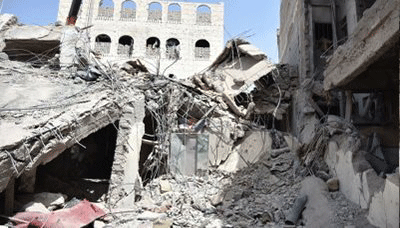
Local Editor
A year after the conflict in Yemen spread across the country, nearly half its 22 provinces are on the verge of famine and most of the population needs some form of aid, according to the United Nations.
Yemen was already mired in a humanitarian crisis before the violence escalated in March last year, but now its needs are beyond the international aid agencies’ current capacity to respond, the United Nations has said.
The warring parties have agreed to a cessation of hostilities starting at midnight on April 10 and peace talks in Kuwait beginning a week later, the United Nations said on Wednesday.
There have already been several failed attempts to defuse the conflict, which has drawn in regional foes Saudi Arabia and Iran.
What’s happening in Yemen?
President Ali Abdullah Saleh was forced to step down in 2011 after widespread protests against his 33-year rule. A lengthy national dialogue ending in January 2014 failed to generate consensus on power-sharing arrangements and the future of the south.
The Houthi Ansarullah movement, revolutionaries who hail from northern Yemen where they have fought the government on and off for more than a decade, marched south in 2014, and by the end of the year had become the dominant authority in nearly half the country’s governorates. They tightened their grip on the capital in January 2015.
The Houthis formed an alliance with Saleh, their former foe, but it remains shaky. They now control the capital Sana’a and other major cities in central Yemen.
President Abd-Rabbu Mansour Hadi fled to Riyadh in March 2015, where he set up a government in exile. That month a Saudi-led coalition began a military campaign to support him and allegedly bring him back to power.
The exiled government the Houthis are fighting is now largely confined to the southern city of Aden. The Saudi-led coalition has targeted civilians and some of the attacks may have been crimes against humanity, U.N. sanctions monitors said earlier this year.
What is the humanitarian situation now?
Yemen is the poorest country in the Arab peninsula; it has to import almost all its food, but the conflict has slowed shipments to a trickle. The nation’s infrastructure is badly damaged, and many health centers and schools have been forced to close.
Key statistics about the humanitarian situation:
* More than 13 million people out of a population of 26 million need food aid.
* About 80 percent of the population needs some kind of aid
* More than 6,000 people have been killed and 30,000 injured since the start of the Saudi-led military campaign - half of them civilians
* 1 in 10 Yemenis are displaced, many of them living with host families
* Almost 600 health facilities have closed because of damage, or shortages of supplies and medical staff. Others are operating at much reduced capacity for the same reasons
* More than 1.8 million children have been out of school since mid-March 2015
* As of January 2016, some 1,170 schools were unfit for use because of damage, or because they were sheltering displaced people, or were occupied by armed groups
Sources: News Agencies, Edited by Website Team